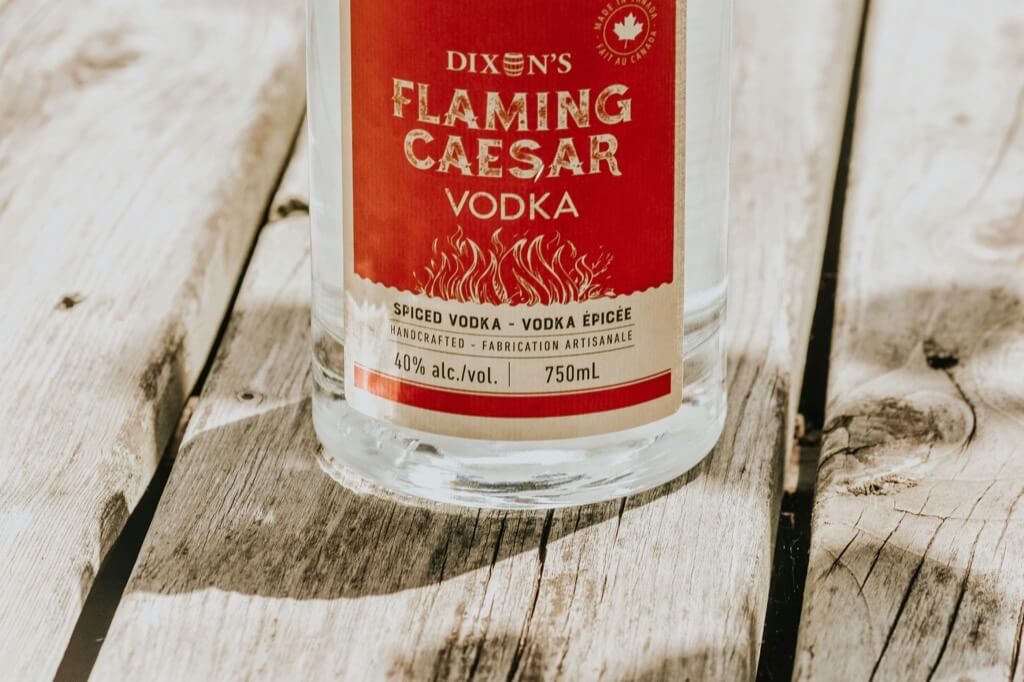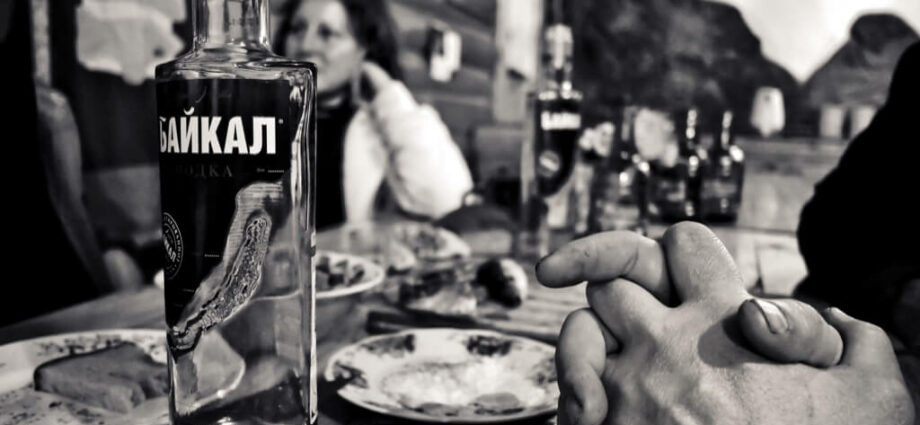When it comes to transparent liquors, moonshine and vodka often find themselves in the spotlight. At first glance, they may seem like distant cousins, but as we delve deeper into their origins, production processes, and characteristics, a world of differences unfolds.
Moonshine
Moonshine, often associated with rebellion and Prohibition-era bootleggers, is more akin to spirits like whiskey than vodka. Despite their similar appearance and high proof, moonshine and vodka are worlds apart in terms of production and background.
Moonshine, contrary to popular belief, did not originate in the United States. Its roots trace back further, but its (illegal) production experienced a significant surge during Prohibition, which began in 1920. This clandestine history has shrouded moonshine in mystery and intrigue for decades. The process of making moonshine mirrors that of whiskey, with a few key distinctions. Moonshine, unlike whiskey, is unaged and boasts a high alcohol content. It shares the same grain-based production methods as whiskey but without the luxury of aging in barrels. This absence of aging imparts a sharper and more potent character to moonshine, making it a spirited rebel in the world of liquor.
Vodka

Vodka, on the other hand, stands as a global icon of acceptability and versatility. Hailing from the vodka belt, which encompasses nations like Russia, Poland, Sweden, Norway, and Finland, vodka has a long and storied history.
The vodka belt, where vodka was first distilled hundreds—if not thousands—of years ago, includes a diverse array of nations. Russia, often synonymous with vodka production, is a prominent member of this illustrious group. Vodka’s widespread acclaim stems from its impeccable history and exceptional adaptability. Often described as “neutral,” vodka’s lack of discernible flavor is its strength, allowing it to effortlessly blend with various mixers and serve as the foundation for countless cocktails.
Moonshine vs. Vodka
While both moonshine and vodka undergo distillation, their production processes diverge in significant ways. Understanding these differences provides insights into the unique qualities of each spirit.
Crafting Vodka
- To create vodka, the distillation process is just one step among many. It all begins with the basic ingredients: yeast and water. These elements are combined and heated, initiating fermentation and alcohol production as yeast consumes sugar.
- After fermentation, the liquid is distilled, concentrating and purifying the alcohol. Multiple rounds of filtration may follow, further refining the vodka’s purity. Some vodka producers choose to add flavorings after distillation, contributing to the diverse range of vodka varieties available today.
Crafting Moonshine
- The process of making moonshine closely resembles that of whiskey production, making it distinct from vodka’s journey. Moonshine’s primary distinction lies in its lack of aging after distillation, allowing for a faster production timeline and resulting in a crystal-clear appearance.
- Moonshine production begins with the creation of a mash using grains, water, and yeast. Heating the mash initiates fermentation, which continues until the desired alcohol content is achieved. Following this, the liquid is strained, distilled, and bottled. If desired, flavoring can be added at this stage, contributing to the variety of moonshine flavors available.
Ingredients: What Goes In?
The ingredients used in crafting moonshine and vodka vary, contributing to their unique flavors and characteristics.
Moonshine
While corn is a common starting material for moonshine, this versatile spirit can be produced from any grain or fruit that can be converted into sugar. Hence, you may encounter variations like corn whiskey or fruit-infused moonshine, each offering a distinct taste profile.
Vodka
Vodka, like moonshine, displays remarkable versatility in its ingredient selection. While potatoes are a popular choice, various cereal grains such as wheat, corn, rye, beets, and rice can be used. Additionally, flavored vodkas have gained popularity, offering options like pepper-infused, fruit-flavored, and sweet and salty combinations.
Comparing Their Attributes
Moonshine and vodka share common characteristics as distilled spirits, yet they each possess unique qualities that set them apart.
Versatility and Lack of Aging
One significant similarity is their versatility and the absence of aging after distillation. This characteristic sets them apart from other spirits like bourbon, whiskey, or Scotch, which require extensive aging processes. It also accounts for their clear and transparent appearance.
Alcohol Content
Both moonshine and vodka are known for their high alcohol content. Vodka typically ranges from 40 to 50 percent alcohol by volume, equivalent to 80 to 100 Proof. Moonshine, on the other hand, varies even more widely, with a typical range of 80 to 150 Proof, translating to 40 to 70 percent alcohol by volume. These high-proof spirits pack a punch and should be enjoyed responsibly.
Size, Price, and Alcohol Content
When it comes to purchasing moonshine and vodka, factors like size, color, price, and alcohol content play a significant role in making your choice.
Moonshine’s Market Presence
Moonshine is still relatively new to the legal liquor market, which is reflected in its pricing. You can expect to spend approximately $20 to $30 for a 750-milliliter bottle of premium moonshine. Brands like Midnight Moon and Ole Smoky fall within this price range, with a few options in the slightly higher bracket.
Both vodka and moonshine come in a range of bottle sizes, catering to different preferences. Sizes range from convenient 50-milliliter bottles for single use to substantial 1.75-liter options. However, the standard 750-milliliter bottles remain the most popular choice among consumers.
Vodka Offers A Wider Range
In contrast, vodka has been a staple in the liquor market for a considerable period. Vodka offerings span a wide price range, from remarkably affordable to exceptionally costly. Budget-friendly options like Pinnacle, UV, and Smirnoff are readily available for under fifteen dollars per bottle. On the other end of the spectrum, premium brands like Belvedere, Grey Goose, and Tito’s Handmade Vodka can be found in the $20 to $30 range.
Vodka bottles come in a diverse array of shapes and sizes, from the traditional round bottle to more unique and artistic designs. Moonshine often retains a relic from its illicit past with mason jars as a common packaging choice.
How to Enjoy Moonshine and Vodka

Now that we’ve explored the origins, production, and characteristics of moonshine and vodka, let’s turn our attention to how to savor these spirits in various styles.
The Classic Moscow Mule
Vodka’s adaptability shines in its serving styles. Whether you prefer it mixed with carbonated water, tonic or enjoyed neat, vodka accommodates your preferences. It’s also a star ingredient in a plethora of classic and creative cocktails, including the Bloody Mary, Screwdriver, Black Russian, Vodka Martini, and Moscow Mule.
Moscow Mule Recipe:
- 3/4 ounces of vodka
- 0.5 ounces of lime juice
- Cubes of ice
- Half a cup of ginger beer
- Lime wedge for garnish
Pour vodka and lime juice into an ice-filled copper mule mug. Garnish with a lime slice, pour ginger beer on top, and savor the refreshing Moscow Mule.
In contrast, moonshine often evokes images of simpler times and rustic charm. While it can be enjoyed straight from a mason jar or jug, it also lends itself well to mixing in cocktails or pairing with ice and various flavors. Here’s a moonshine-inspired summer cocktail recipe:
The Radiance of Summer Recipe:
- 2 teaspoons of Old Smoky Sour Lime Moonshine
- Half an ounce of lemonade
- Two ounces of orange juice
- 0.25 ounces of lemon-lime soda
- Slice of lime for decoration
Shake all liquid ingredients in a shaker until well combined. Pour over ice and top with a wedge of lime for a refreshing summer sip.
When Moonshine and Vodka Aren’t Your Thing
In some instances, you may find yourself in need of substitutes for moonshine or vodka, especially when specific characteristics are desired.
If you’re seeking a potent spirit akin to moonshine, high-proof whiskeys can be excellent alternatives. Consider options like Knob Creek Single Barrel Reserve or Woodford Reserve, both known for their robust profiles. Additionally, Everclear, an exceptionally potent clear-grain alcohol, offers a powerful substitute for moonshine.
When it comes to substituting vodka, both gin and tequila can serve as versatile alternatives. They are known for their adaptability and ease of mixing in cocktails or with soda water and tonic. Whether in a classic martini or a refreshing highball, gin and tequila can step in when vodka is unavailable.
In the great debate of moonshine versus vodka, it’s clear that each has carved its niche in the world of spirits, bringing unique flavors, histories, and experiences to the table. Moonshine, with its bold character and untamed heart, invites you to savor a piece of American history with every gulp. Vodka, the chameleon of liquors, proves that sometimes, being neutral is your greatest strength, especially when crafting the perfect cocktail.

